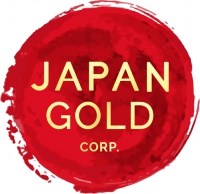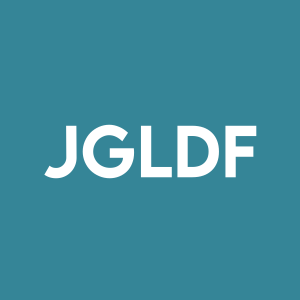Japan Gold Barrick Alliance Commences Second 2025 Drill Program
- Project is fully funded by Barrick Mining Corporation through alliance partnership
- Located in highly prospective Hokusatsu district with historical production of over 13M oz gold
- Strategic location near Hishikari Mine, one of world's highest-grade gold mines (9Moz past production, 5Moz reserves)
- Extensive alteration system identified through mapping and ground magnetic surveys
- Limited historical drilling in the alteration zones
- Masaki alteration zone requires further investigation and is not included in current drilling program
Vancouver, British Columbia--(Newsfile Corp. - June 10, 2025) - Japan Gold Corp. (TSXV: JG) (OTCQB: JGLDF) ("Japan Gold" or the "Company") is pleased to announce the launch of its second 2025 drill program under the Barrick Alliance, with drilling underway at the Ebino Project, located in the southern Japanese island of Kyushu. The Ebino drill program consists of three drill holes totalling approximately 1,300 metres to test the Otsuka and Kuwanoki-Zuri ("KZ") targets located within the Hokusatsu district, which has produced more than 13 million ounces of gold1 from several mines and remains one of the most prospective regions in Japan.
The Ebino drill program is fully funded by Barrick Mining Corporation through its alliance with Japan Gold. A joint Japan Gold/Barrick technical committee oversees the work programs.
Chairman and CEO, John Proust, commented, "As drilling was underway at the Barrick Alliance Hakuryu Project in the northern island of Hokkaido, our team simultaneously prepared for the second Barrick Alliance drill program at the Ebino Project in southern Japan, proving our capabilities to successfully manage multiple projects. Drilling at Ebino aims to test the potential for concealed epithermal veins systems under cover of volcanic material to the north of the Hishikari Mine and to further unlock the district-scale potential of the Hokusatsu region. This area has been under explored since the discovery of the high-grade Hishikari deposit in 1981, and we have worked closely with the Barrick technical team to identify robust targets for drill testing with the potential to host concealed orebodies."
The Ebino Project
The Ebino Project is located within the Hokusatsu district of the Southern Kyushu Epithermal Gold Province. The district contains Sumitomo Metal Mining Co., Ltd.'s, Hishikari Mine and three major historic gold mines, Kushikino, Yamagano and Ohkuchi. The Hishikari Mine, with approximately 9Moz of past production and 5Moz current reserves2, is a concealed orebody discovered in 1981. Hishikari is one of the world's highest-grade gold mines and currently Japan's only active large-scale producing gold mine.
Ebino is located approximately 10km north of the Hishikari Mine and approximately 8km east of the historic Ohkuchi Mine. Historic exploration completed mainly by the Metal Mining Agency of Japan confirmed the presence of three distinct alteration areas - Otsuka, KZ and Masaki (refer to Figure 1). Limited historic drilling has been undertaken within the alteration zones.
The Barrick Alliance recently completed a program of target generation over the three alteration areas including stream sediment, soil and rock chip sampling, mapping, ground magnetics and an IP survey.
Mapping at Otsuka and KZ confirmed an extensive alteration system, which is capped by volcanic material. The alteration system sits within a favourable NE and E-W structural corridor, spatially associated with rhyolite/dacitic domes and discrete gravity highs (refer to Figure 2). The alteration system is comprised of smectite-illite clays.
Ground magnetic survey suggests the alteration area associated with Otsuka and KZ is greater than mapped, with a zone, 3 km x 3.6 km of magnetic destructive alteration centred over the two targets. In places, low level pathfinder soil geochemistry is present, including an extensive low level Hg soil anomaly (>0.5ppm Hg) covering the Otsuka and KZ alteration zones. Most of the Otsuka and KZ alteration zones have not been drill tested.
The Otsuka and KZ alteration and associated pathfinder anomalies may represent the upper levels of a low sulphidation epithermal system, with potential for veins developed at depth.
Three holes, two at Otsuka and one at KZ, are proposed to be drilled to assess the potential for development of epithermal quartz veins at depth.
This first phase of drilling will not test the Masaki alteration zone as based on the work conducted to date, the Masaki alteration is interpreted to be high sulfidation related and requires further investigation. Work to define drill targets within the Masaki area is ongoing.
Qualified Person
The technical information in this news release has been reviewed and approved by Japan Gold's Senior Technical Advisor, Fraser MacCorquodale, BAppSc, MAIG, MSEG, who is a Qualified Person as defined by National Instrument 43-101.
Figure 1: Ebino Project Historic & Current Mines/Production, Simplified Geology and Planned Drill Hole Locations
To view an enhanced version of this graphic, please visit:
https://images.newsfilecorp.com/files/5665/254996_63010d21f4630aa3_001full.jpg
Figure 2: Otsuka and KZ Proposed Drill Holes
To view an enhanced version of this graphic, please visit:
https://images.newsfilecorp.com/files/5665/254996_63010d21f4630aa3_003full.jpg
About Japan Gold Corp.
Japan Gold Corp. is a Canadian mineral company focused on the exploration and discovery of high-grade epithermal gold deposits across the main islands of Japan. The Company holds a significant portfolio of tenements covering areas with known gold occurrences, history of mining and prospective for high-grade epithermal gold mineralization in one of the most stable and under explored countries in the world. The Japan Gold leadership and operational team of geologists, drillers and technical advisors have extensive experience exploring and operating in Japan and have a track record of discoveries world-wide. Japan Gold has an alliance with Barrick Gold Corporation to jointly explore, develop and mine certain gold mineral properties and mining projects with the potential to host Tier 1 or Tier 2 gold ore bodies in Japan. Significant shareholders include Equinox Partners Investment Management LLC and Newmont Corporation.
On behalf of the Board of Japan Gold Corp.
John Proust
Chairman & CEO
For further information, please contact:
Alexia Helgason
Vice President, Corporate Communications
Phone: +1(604) 417-1265
Email: ahelgason@japangold.com
Cautionary Note
Neither the TSX Venture Exchange nor its Regulation Services Provider (as such term is defined in the policies of the TSX Venture Exchange) accepts responsibility for the adequacy or accuracy of this release. This news release contains forward-looking statements relating to expected or anticipated future events and anticipated results related to future partnerships and the Company's 2025 gold exploration program. These statements are forward-looking in nature and, as a result, are subject to certain risks and uncertainties that include, but are not limited to, the timing and granting of prospecting rights; the Company's ability to convert prospecting rights into digging rights within the timeframe prescribed by the Mining Act; general economic, market and business conditions; competition for qualified staff; the regulatory process and actions; technical issues; new legislation; potential delays or changes in plans; working in a new political jurisdiction; results of exploration; the Company's ability to execute and implement future plans, arrange or conclude a joint venture or partnership; and the occurrence of unexpected events. Actual results achieved may differ from the information provided herein and, consequently, readers are advised not to place undue reliance on forward-looking information. The forward-looking information contained herein speaks only as of the date of this News Release. The Company disclaims any intention or obligation to update or revise forward‐looking information or to explain any material difference between such and subsequent actual events, except as required by applicable laws.
1 Garwin, S. L., Hall, R., & Watanabe, Y. (2005). Tectonic setting, geology, and gold and copper mineralization in Cenozoic magmatic arcs of Southeast Asia and the West Pacific.
The Mining and Materials Processing Institute of Japan (1989, March). Journal of Japanese gold mines, Vol. 1: Kyushu, Japan
Izawa, E., & Zeng, N. (2001). Kushikino gold mineralization in a Pliocene volcanic region, Kyushu, Japan. In Society of Economic Geologists (Ed.), Guidebook Series (Vol. 34, pp. 53-60). Society of Economic Geologists.
Murakami, H., and Freebey, C., (2001) Geology and Geophysical Expression of the Yamagano low sulfidation epithermal Au-Ag deposit, southwest Kyushu In Society of Economic Geologists (Ed.), Guidebook Series
2 Sumitomo Metal Mining Co., Ltd. Integrated Report, August 2024

To view the source version of this press release, please visit https://www.newsfilecorp.com/release/254996









